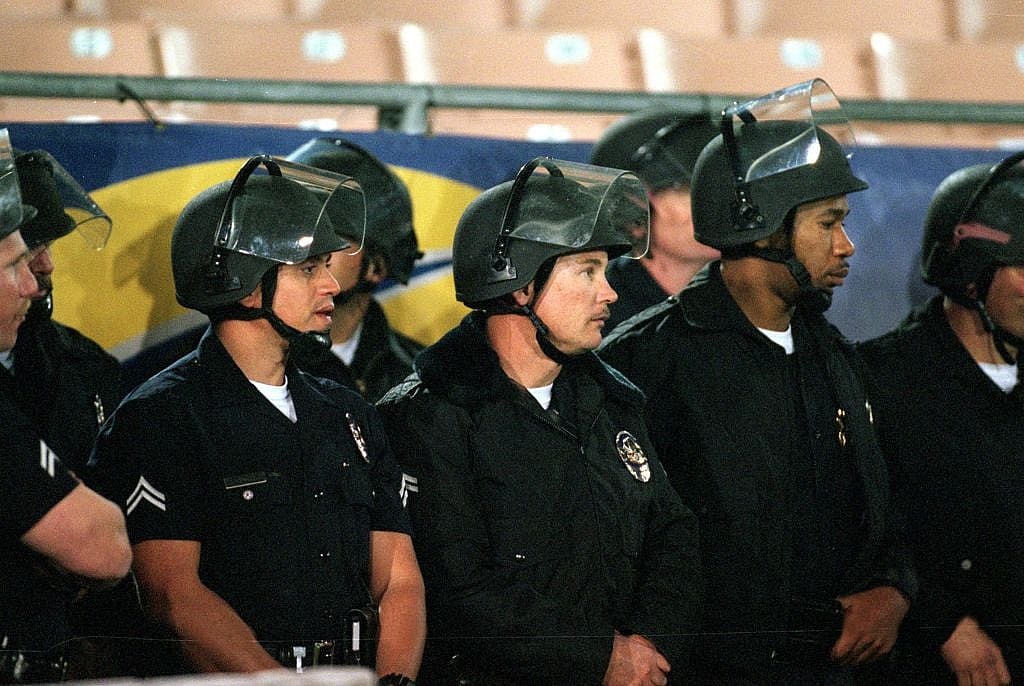The FBI launched the National Use of Force Data Collection program in 2019 to provide reliable statistics on law enforcement use-of-force incidents. Despite a presidential order, for the second year in a row, only 27 percent of police departments have supplied the data.
As a result, The Washington Post reports that the database will only list participating agencies “and no data about how often police fire their weapons, cause serious injury or kill people,” the outlet writes.
Nationwide, the majority of law enforcement agencies still close records or make them hard to obtain. They claim they are personnel matters, privacy violations, or ongoing investigations that could be compromised. They are backed by strong law enforcement unions and the law enforcement bills of rights that protect the privacy rights of officers over the public’s right to know, theGRIO reported.
There are a handful of national websites that provide data on police use-of-force, including Fatal Encounters and Mapping Police Violence. Since 2015, The Washington Post has cataloged every fatal shooting by an on-duty police officer via its Fatal Force database. As noted on the site, “in that time there have been more than 5,000 such shootings recorded by The Post.”
The Fatal Force website also notes that “After Michael Brown, an unarmed Black man, was killed in 2014 by police in Ferguson, Mo., a Post investigation found that the FBI undercounted fatal police shootings by more than half. This is because reporting by police departments is voluntary and many departments fail to do so.”

According to the FBI’s website, the National Use-of-Force Data Collection provides facts about the circumstances and officers involved in use-of-force incidents. The data does not include “specifics about cases, disclose the names of people involved, or provide opinions on whether uses of force were justified.” The system does list the gender, race, and ethnicity of subject(s) and whether the officer(s) was on duty or injured. The FBI does not publicly report data from any specific agency, only by state.
To participate, police and federal law enforcement agencies submit monthly use-of-force reports to the FBI data portal, including fatalities or injuries caused by police. In 2019, a measly 27 percent of law enforcement agencies submitted information. That percentage was the same for 2020 and covered 42 percent of officers, the FBI’s website reports.
“I don’t get it,” said Chief Steven Casstevens of the Buffalo Grove, Ill., Police Department. “I’ve heard excuses but not good reasons. Every statistician will tell you, if you only have 50 percent, then your data is worthless.”
Former President Donald Trump issued an executive order last year that banned officers use of chokeholds and called for establishment of a use-of-force database.
“Americans want law and order, and demand law and order,” Trump said. “They may not say. They may not be talking about it. But that’s what they want. Some of them don’t know what they want, but that’s what they want.”
The George Floyd Justice in Policing Act, which was approved 220-212 in March, requires police agencies to submit use-of-force data to receive federal grants. The sweeping legislation would ban chokeholds and “qualified immunity” for law enforcement and create national standards for policing in a bid to bolster accountability. The bill is now pending before the Senate after passing the House, theGRIO reported.
“Transparency and police data are what lead to accountability,” said Nancy La Vigne, executive director of the Council on Criminal Justice’s Task Force on Policing. “When you don’t know what use of force cases are happening, it’s difficult to know if you’re making improvements.”
This story contains additional reporting from the Associated Press.
Have you subscribed to theGrio’s podcast, “Dear Culture?” Download our newest episodes now!
TheGrio is now on Apple TV, Amazon Fire and Roku. Download theGrio today!

